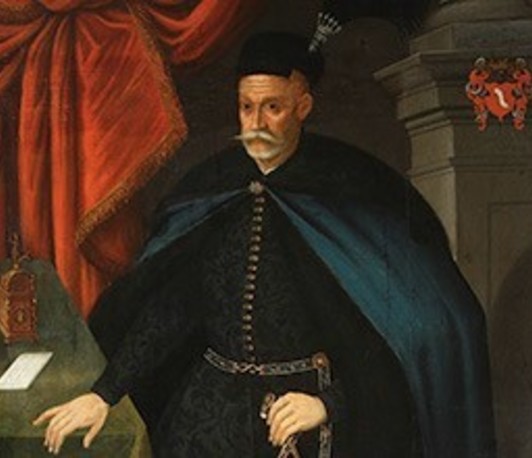Early Modern Poland-Lithuania and the Spectre of Orientalism
Research Seminar Series: “Shifting Images and Ideas of Europe’s East: An Art Historical Approach from the Margins”
- Public event without registration
- Datum: 03.07.2023
- Uhrzeit: 15:00 - 17:00
- Vortragender: Tomasz Grusiecki
- Ort: Villino Stroganoff, Via Gregoriana 22, 00187 Rome and online
- Kontakt: freiberg@biblhertz.it

We will examine how both sides discursively negotiated questions of identity and significance, as well as geographical and cultural boundaries. We will use artifacts and performative cultural practices to understand how the associated processes of inclusion and exclusion did function, how Europe was repeatedly produced and constructed in the changing field of tension between East and West, and under what conditions and with what intentions these shifts did occur.
7th Research Seminar “Early Modern Poland-Lithuania and the Spectre of Orientalism”
In the sixteenth century, Polish nobility embraced Ottoman and Persian styles in fashion and material culture, a phenomenon frequently referred to as “Orientalization” in Polish historical study. However, this traditional focus on the reception of “Oriental” material and visual forms downplays Poland's undeniable belonging in Europe, despite its geographical location on the continent's edges.
This ambiguity has been recognized by both Polish and Western European writers over centuries, including early modern polemicists who regarded Poland-Lithuania as the “bulwark of Christendom.” However, our perception of the region has too often been influenced by Enlightenment-era philosophers who divided the continent into zones of civilization and obscurantism, as well as Cold War ideologues who reinforced the East-West binary.
This paper aims to reasses the concept of “Orientalization” in relation to early modern Polish culture by (1) exploring new questions surrounding the stylistic Ottomanization of costume and material culture in Poland and (2) reappraising cartographic depictions of Poland produced abroad, particularly those depicting costumed bodies on the margins of maps. Moving beyond the Orient versus Occident dichotomy, this paper critically examines the visual, material, and textual expressions of early modern Polishness. In so doing, it aims to reassess the validity of Orientalist discourse, which tends to draw a line between “civilized” Europe and its negative “Other” in the East—an oversimplified binary that did not exist for early modern Europeans.
Tomasz Grusiecki is associate professor of early modern art history at Boise State University. He specializes in the study of visual and material culture in central and eastern Europe. His research has appeared in The Art Bulletin, Slavonic and East European Review, Journal of Early Modern History, Journal of the History of Collections, Zeitschrift für Ostmitteleuropa-Forschung, and other journals. In recognition of his contributions, Tomasz has received several accolades, including—most recently—the 2023 Arthur Kingsley Porter Prize from the College Art Association. Currently, he is actively involved as a co-investigator in the AHRC-funded research project, Connected Central European Worlds, 1500–1700. His first book, Transcultural Things and the Spectre of Orientalism in Early Modern Poland-Lithuania, is forthcoming with Manchester University Press in early 2024.
For participation online on our Vimeo Channel, please follow this link: https://vimeo.com/event/3446404
Scientific organization: Jana Graul and Seraina Renz
Image: Anonymous (Poland?), Portrait of Sebastian
Lubomirski, after 1603, oil on canvas, 200 x 120 cm. Wasaw, Muzeum Narodowe, MP 5510, provenance: the Potocki of Krzeszowice
collection (photograph by Piotr Ligier/Zbigniew Doliński, provided by Muzeum
Narodowe w Warszawie)